Command Palette
Search for a command to run...
IndexTTS-2: Breaking Through the Bottlenecks of Autoregressive TTS Duration and Emotion Control
1. Tutorial Introduction

IndexTTS-2 is a new text-to-speech (TTS) model open-sourced by the Bilibili Voice team in June 2025. The model has achieved major breakthroughs in emotional expression and duration control, and is the first autoregressive TTS model to support precise duration control. It supports zero-sample voice cloning, and can accurately replicate the timbre, rhythm, and speaking style with just one audio file, and supports multiple languages. IndexTTS-2 implements emotional timbre separation control, and users can independently specify the source of timbre and emotion. The model has multimodal emotional input capabilities and supports controlling emotions through emotional reference audio, emotional description text, or emotional vectors. The relevant paper results are "IndexTTS2: A Breakthrough in Emotionally Expressive and Duration-Controlled Auto-Regressive Zero-Shot Text-to-Speech".
The computing resources used in this tutorial are a single RTX 4090 card.
2. Effect display
Same as the voice reference
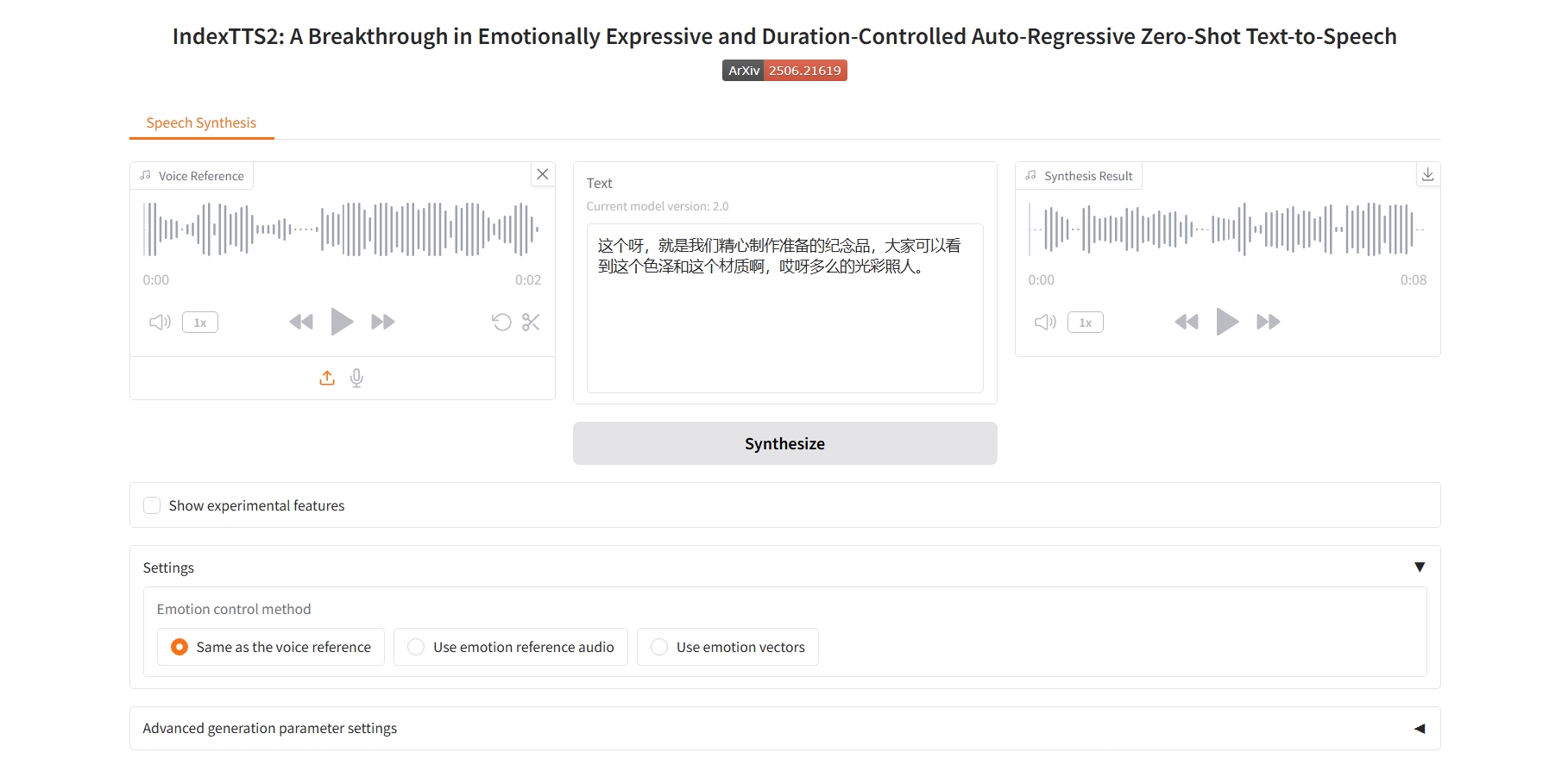
Use emotion reference audio
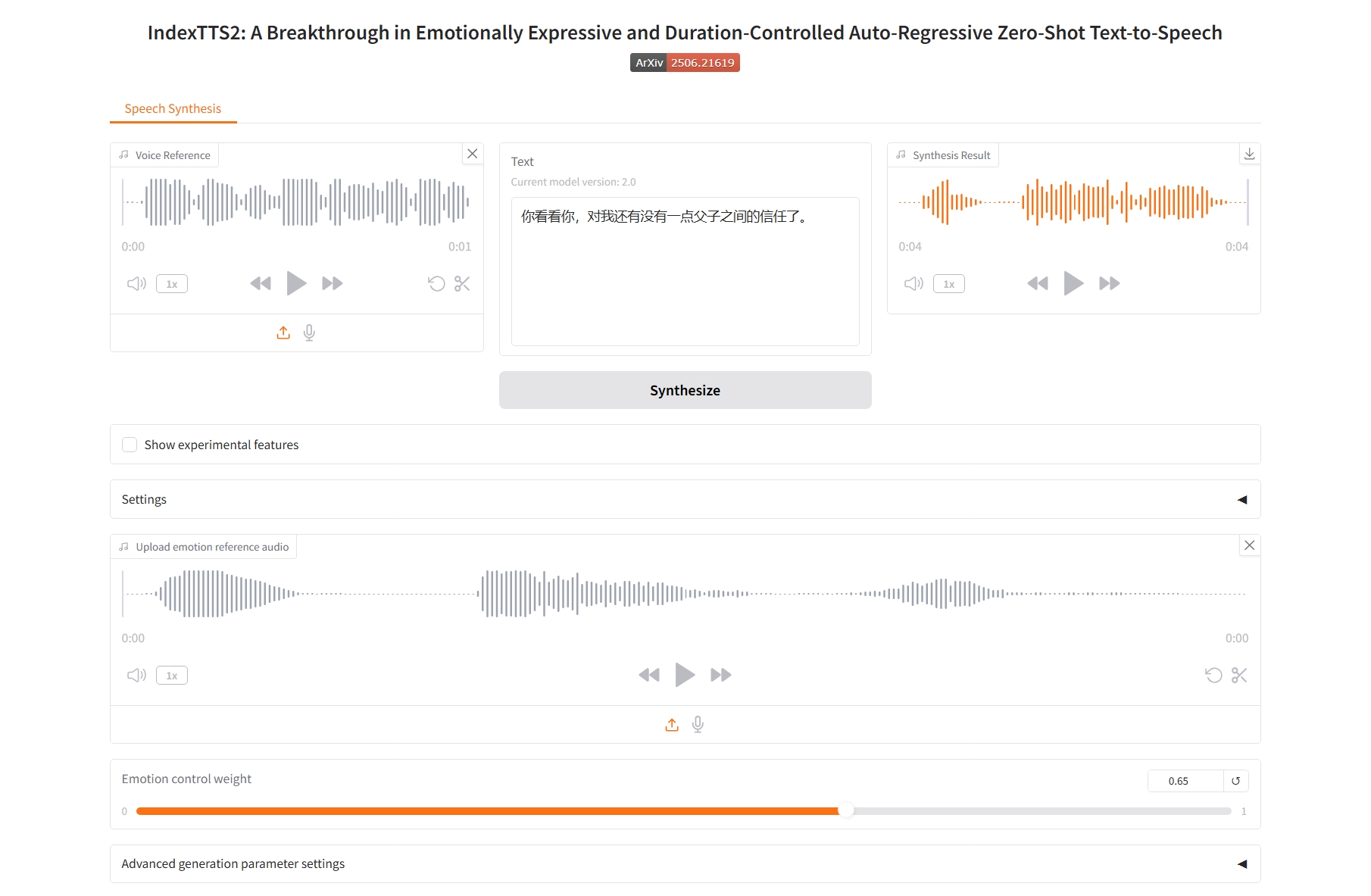
Use emotion vectors
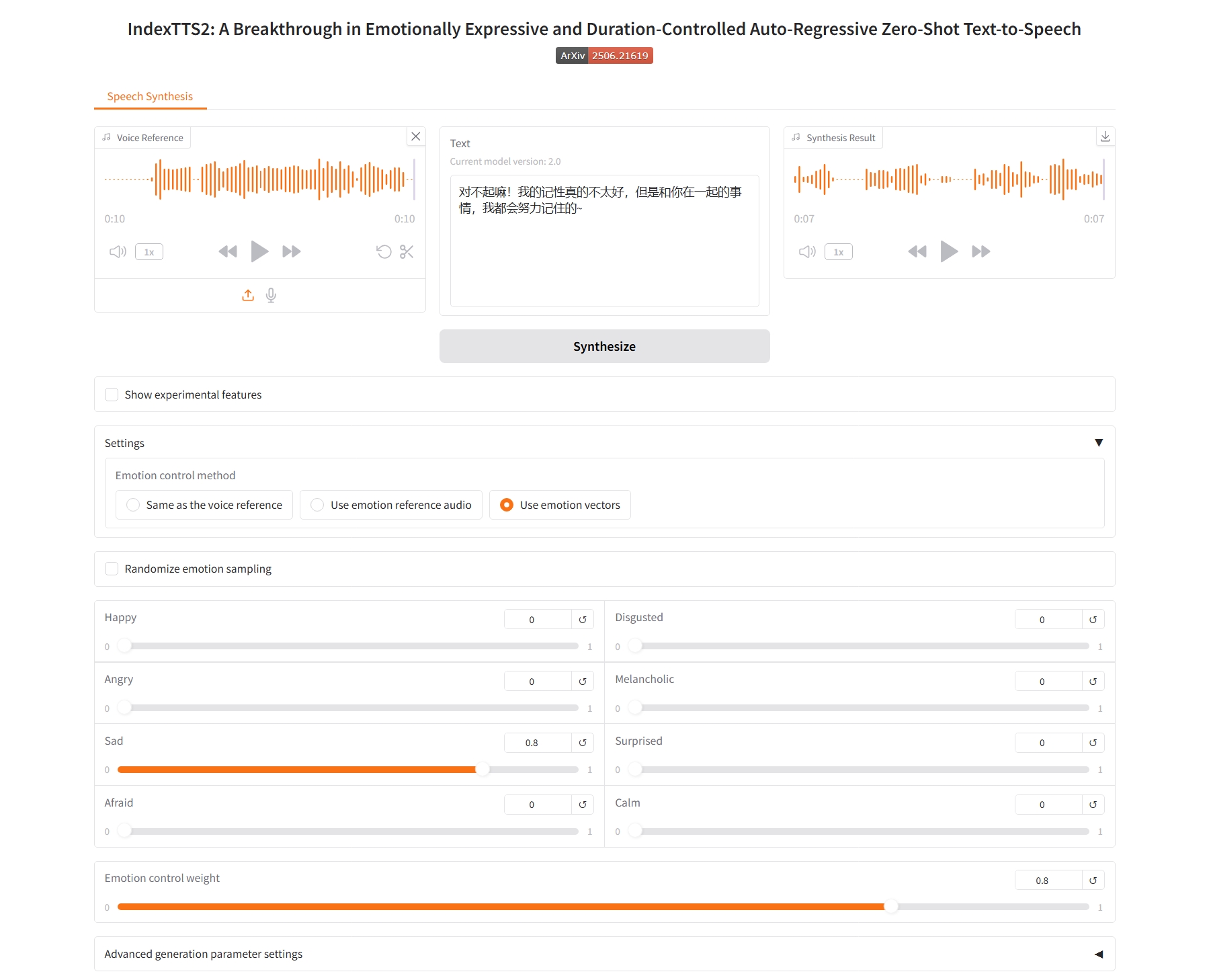
Use text description to control emotion
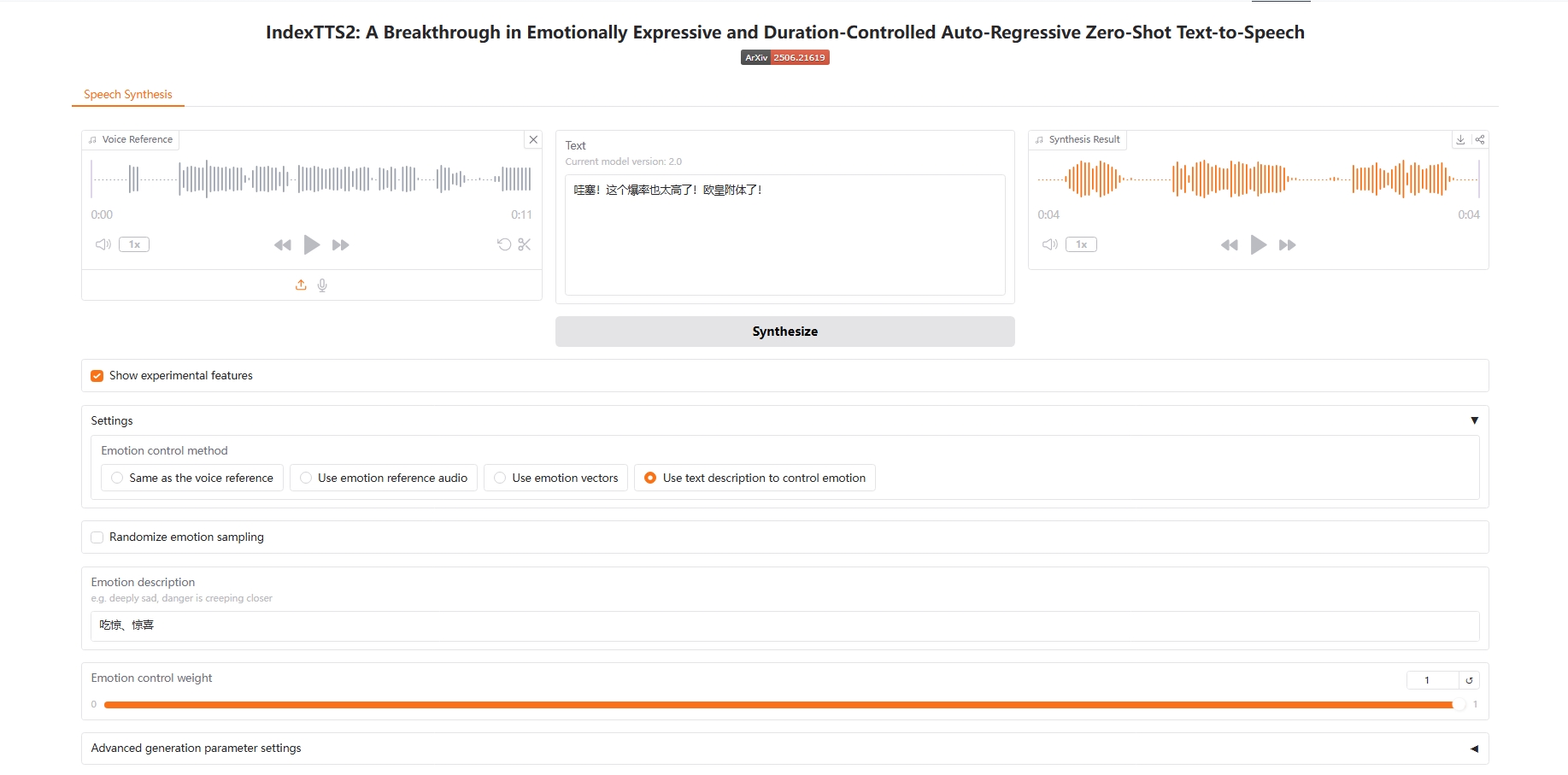
3. Operation steps
1. Start the container
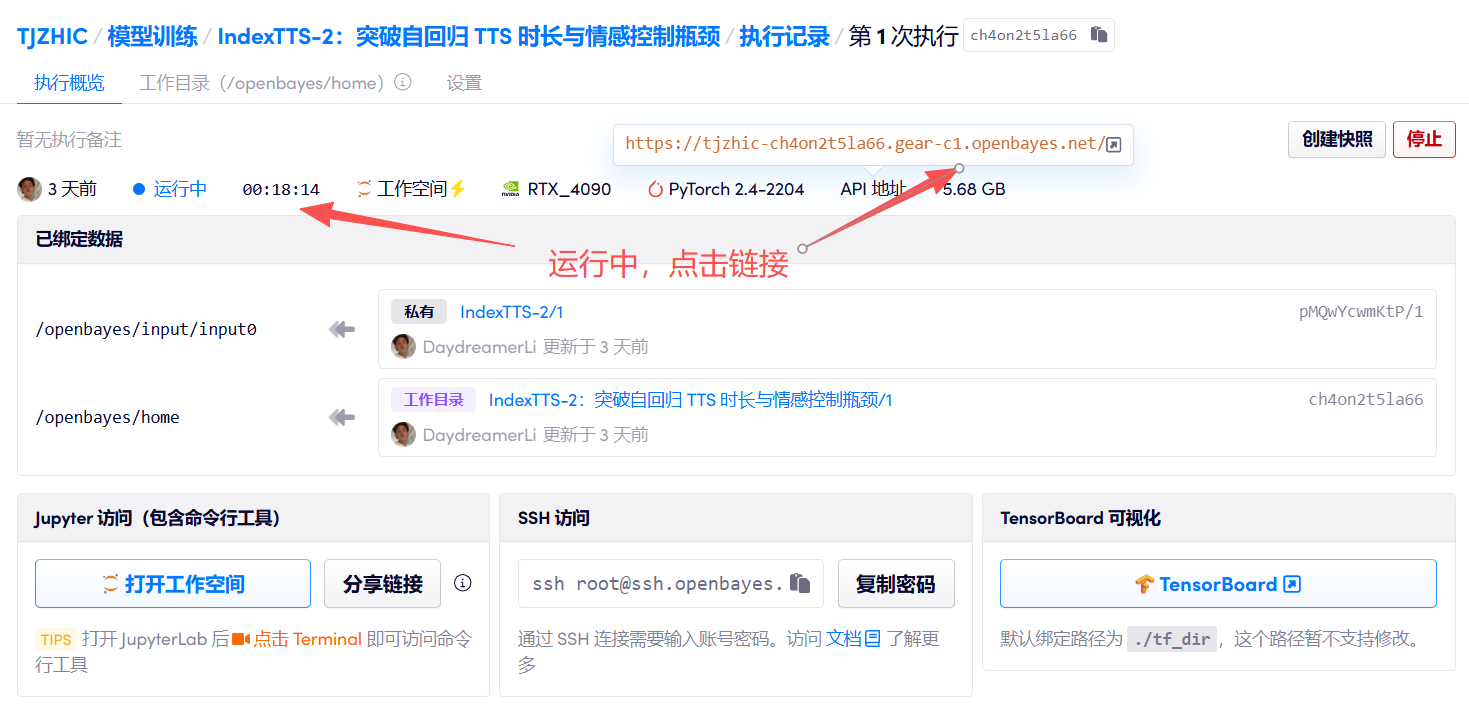
2. Usage steps
If "Bad Gateway" is displayed, it means the model is initializing. Since the model is large, please wait about 2-3 minutes and refresh the page.
When using the Safari browser, the audio may not be played directly and needs to be downloaded before playing.
1. Same as the voice reference
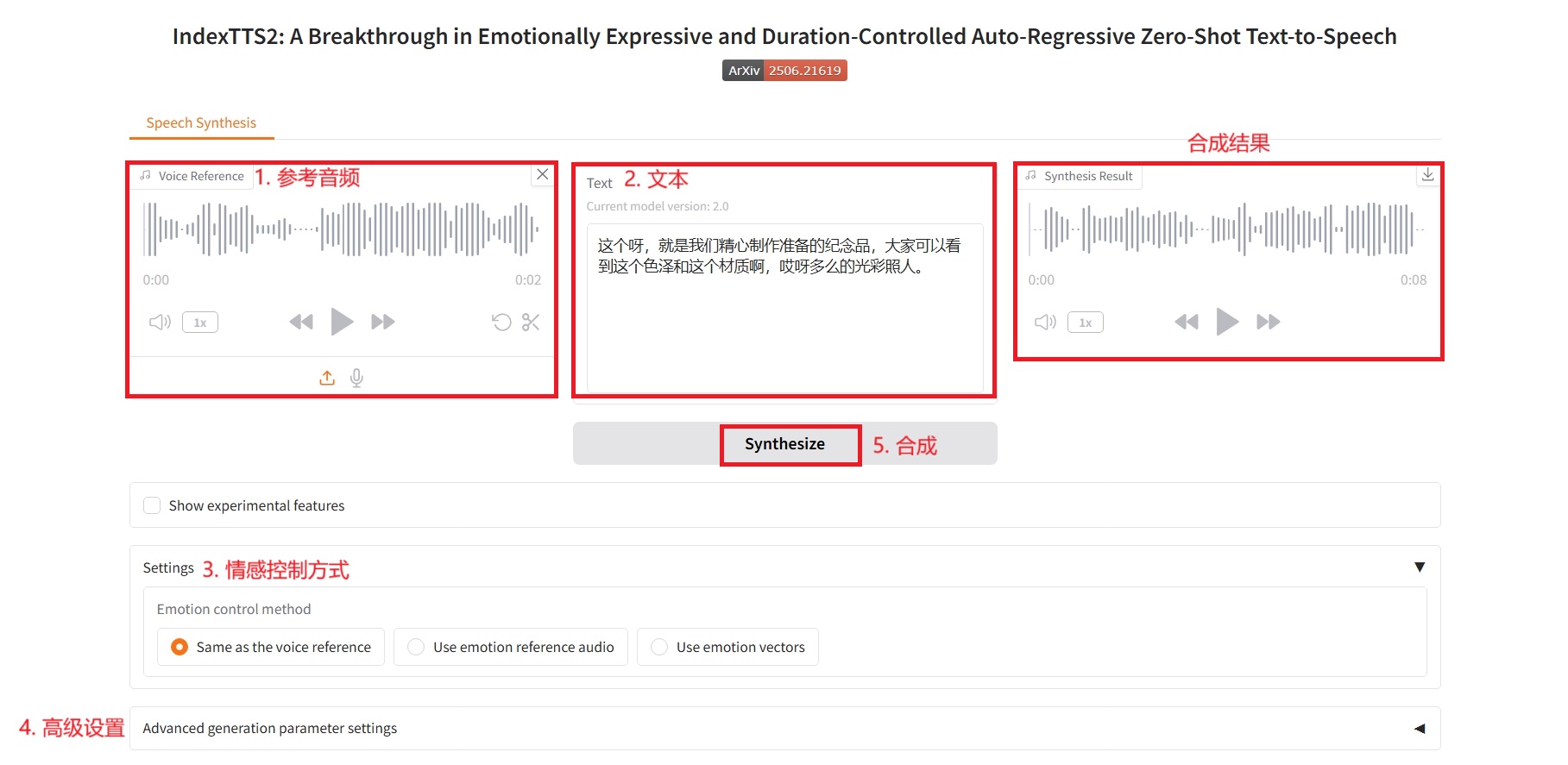
Specific parameters:
- Advanced parameter settings:
- do_sample: whether to perform sampling.
- Temperature: controls the smoothness of the probability distribution during sampling.
- top_p: kernel sampling.
- top_k: At each generation step, only the K tokens with the highest probability are considered.
- num_beams: beam search width.
- repetition_penalty: Repeat penalty, which reduces the probability of the model generating the same token repeatedly.
- length_penalty: length penalty, which encourages or discourages the model from generating longer or shorter sequences. This is mainly effective when num_beams > 1 is used.
- max_mel_tokens: The maximum number of tokens generated.
2. Use emotion reference audio

3. Use emotion vectors
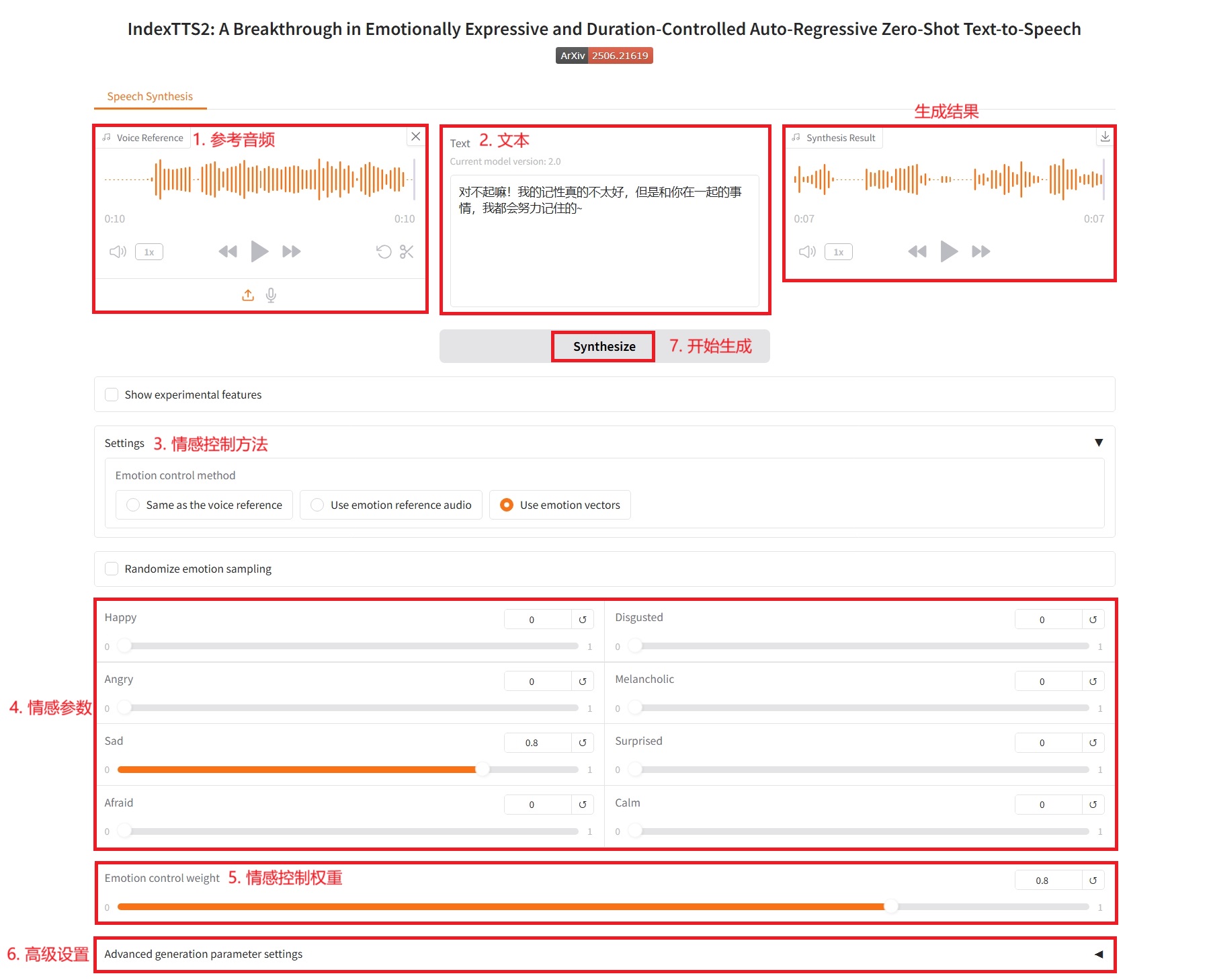
Emotional control parameters:
- Happy, Disgusted, Angry, Melancholic, Sad, Surprised, Afraid, Calm: These correspond to eight basic emotional dimensions. The value of each slider (usually between 0.0 and 1.0) indicates the intensity of the emotion you want to be reflected in the final speech.
4. Use text description to control emotion
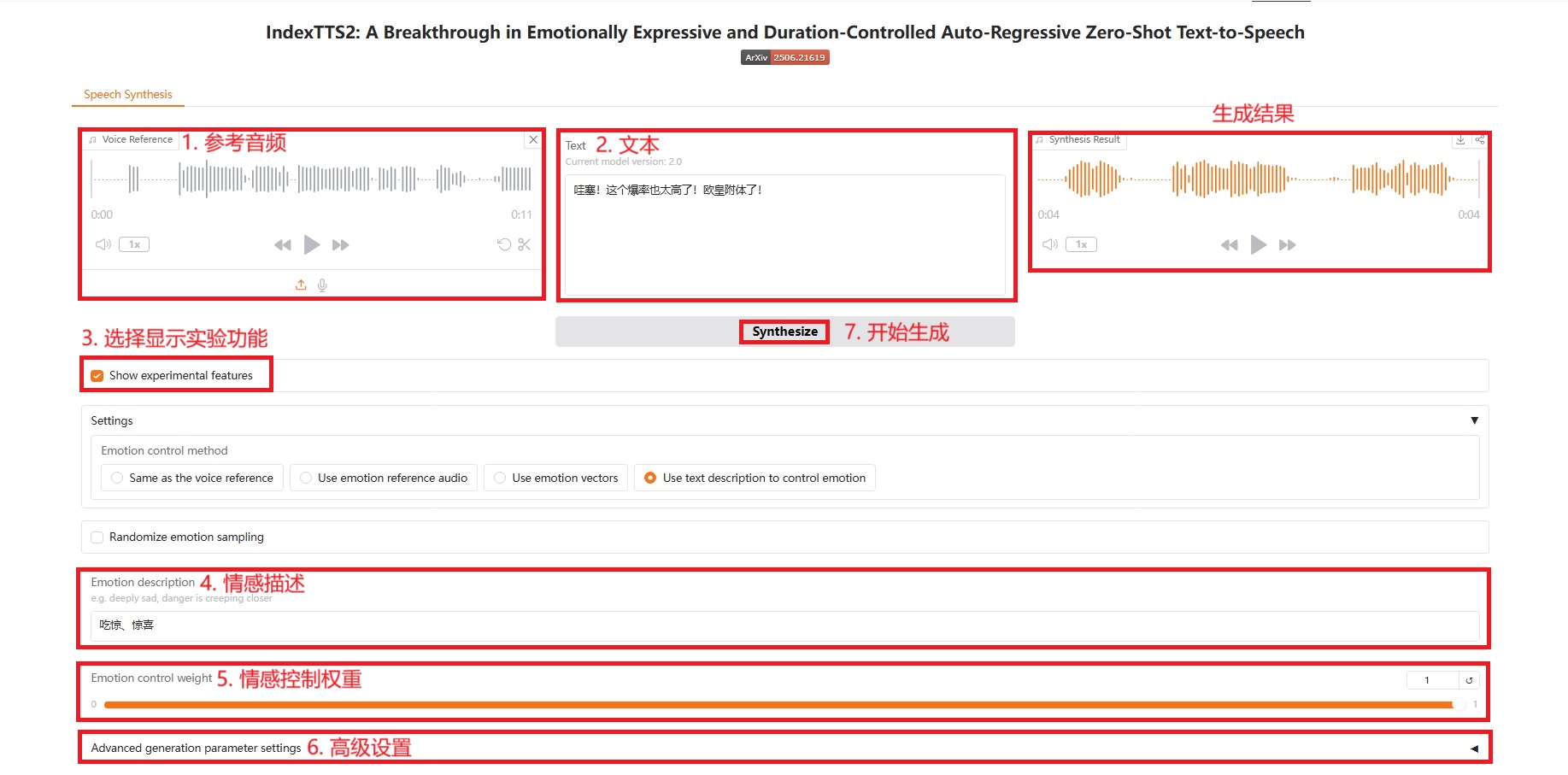
4. Discussion
🖌️ If you see a high-quality project, please leave a message in the background to recommend it! In addition, we have also established a tutorial exchange group. Welcome friends to scan the QR code and remark [SD Tutorial] to join the group to discuss various technical issues and share application effects↓

Citation Information
The citation information for this project is as follows:
@article{zhou2025indextts2,
title={IndexTTS2: A Breakthrough in Emotionally Expressive and Duration-Controlled Auto-Regressive Zero-Shot Text-to-Speech},
author={Siyi Zhou, Yiquan Zhou, Yi He, Xun Zhou, Jinchao Wang, Wei Deng, Jingchen Shu},
journal={arXiv preprint arXiv:2506.21619},
year={2025}
}
@article{deng2025indextts,
title={IndexTTS: An Industrial-Level Controllable and Efficient Zero-Shot Text-To-Speech System},
author={Wei Deng, Siyi Zhou, Jingchen Shu, Jinchao Wang, Lu Wang},
journal={arXiv preprint arXiv:2502.05512},
year={2025},
doi={10.48550/arXiv.2502.05512},
url={https://arxiv.org/abs/2502.05512}
}Build AI with AI
From idea to launch — accelerate your AI development with free AI co-coding, out-of-the-box environment and best price of GPUs.